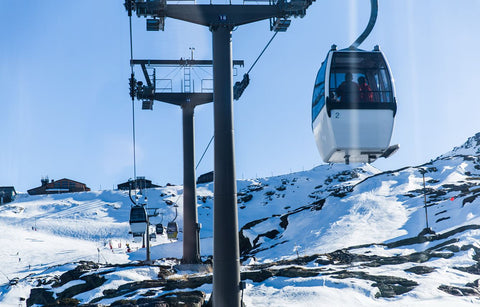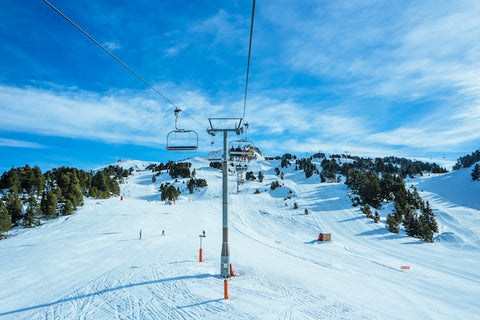Smoking is a common habit all over the world. Statistical research on adult smokers published by the Tobacco Control Journal found that global smoking rates declined in 2020, but there are still about 1.18 billion people who smoke regularly.
This widespread phenomenon causes a great deal of concern among health officials and the general public, since smoking is associated with increased risks for conditions like cancer and respiratory problems. When done in public, it can even harm those who are exposed to secondhand smoke. Having said that, individuals who are planning to visit ski slopes in America must be cautious about their smoking habits. Smoking is discouraged — and at times explicitly regulated — by ski resorts and governments in order to create a healthier and more comfortable experience for all guests.

Even if you view smoking as a leisure activity that will complete your recreational experience as a tourist, it is best to respect and follow these various types of smoking etiquette.
Consider the smoking policies for guests
Among other factors like pricing and amenities, you also have to consider the smoking policies for guests when you book your ski resort of choice.
In popular skiing destinations like Colorado, for example, the policy details for tobacco use vary greatly across ski resorts and areas.
Certain resorts have explicit policies of being 100% smoking-free, so tobacco use is prohibited anywhere within the property. Aside from the health risks due to exposure to smoke, cigarettes can also be a fire and safety hazard. Last year, a small fire was reported on the Ridge of Bell on Aspen Mountain, and was said to have been caused by a cigarette butt that was not extinguished and disposed of properly. As such, guests are told not to smoke anywhere near flammable terrain in order to prevent wildfires.
Meanwhile, other resorts allow guests to smoke outdoors as long as they are within the designated areas, or at least 25-50 feet away from buildings and public entrances. Ski lift rides and lines, outdoor patios, and skiable terrains must still stay smoke-free to ensure a safe environment for all guests. You can always check the ski resort’s website to know their policies beforehand, as well as read signages once you’re onsite.
Research about smoke-free laws
Besides resort-specific policies, smoking etiquette can also be influenced by laws and ordinances in the city or state where the ski resort falls within. If you plan to go to New York, where 43 ski locations can be found (10 of which are destination resorts), then NYC.gov outlines how to adhere to its smoke-free air laws regardless of the resort you’ll be staying in. The state’s Smoke Free Air Act (SFAA) prohibits smoking in all public spaces, and this refers to the use of not just cigarettes and cigars, but also smokeless tobacco, cannabis, e-cigarettes, and hookah.Take note of environmental impact
Smokers also have the responsibility to assess how their consumption habits affect not only individual and public health, but also the larger environment around them. This is especially important considering a lot of ski resorts are now committing to sustainability initiatives in partnership with the National Ski Areas Association, as discussed in a previous article on the Environmental Impact of Ski Resorts.
Since tobacco smoke contains around 7,000 toxins and chemicals, smoking can contaminate the air and thus hinder ski resorts’ efforts to reduce air pollution and overall carbon emissions. Cigarette butts are also one of the most common forms of litter. Unless they are disposed of properly, they can take years to degrade, thus harming the environment further.
Alternative strategies for smokers
Nicotine pouches
It is understandable that despite the willingness to give up smoking while traveling, smokers will still have to deal with their nicotine cravings. There can also be withdrawal symptoms like headaches, dizziness, and irritability, all of which can easily ruin the travel experience. But nicotine pouches are a healthier and more effective way to suppress intense urges to smoke throughout the day, as it supplies nicotine directly into your body without having to inhale or be exposed to harmful tobacco smoke.

It is also an accessible alternative that can be bought over the counter both offline and online. The nicotine pouch brands listed at Prilla.com are offered in different flavors and strengths, ranging from 2mg to 15mg, so you can adjust your intake depending on the potency and frequency of your cravings.
Since it’s an oral product that does not emit any smoke, odor, or residue, it’s discreet and suitable for when you’re skiing and simply exploring.
Nicotine Patch
The nicotine patch is by far one of the most popular smoking cessation methods for those who are active. The patch can last up to 24 hours, making them ideal for those skiing as they don't have to worry about constantly re-upping their nicotine intake or disposing of butts or pouches. Popular brands like NicoDerm CQ Patches are highly recommended by doctors because of this convenience, and if used with other cessation methods increase a person's chances of quitting by 25%.Quit-smoking apps
If you are considering quitting smoking, even if only temporarily as you travel, then it helps to seek cessation aids rather than making this significant lifestyle change unassisted. It can be difficult to access in-person behavioral support like counseling and support groups when you’re traveling and constantly on the move, however. It is in this light that the US Tobacco Control Research Branch at the National Cancer Institute has developed the quitSTART mobile app where smokers can get tailored tips, strategies, and resources for dealing with cravings and bad moods. The app also monitors your progress so you can get back on track despite slip-ups and relapses, thus being a reliable tool for a long-term cessation journey.
Conclusion
In summary, smoking etiquette among ski resorts and public skiing areas must be taken seriously, as they are implemented for health, safety, and environmental reasons. Even if these regulations aren’t clearly communicated, it is still up to you to be considerate of your surroundings and fellow guests who are also trying to have an enjoyable experience like you.
ABOUT THE AUTHOR
Aleksandra Djurdjevic
Senior Content Creator
Aleksandra Djurdjevic is a senior writer and editor, covering snowboarding, skiing and trends in outdoor winter activities. She has previously worked as ESL teacher for English Tochka. Aleksandra graduated from the Comparative Literature department at the Faculty of Philosophy in Serbia. Aleksandra’s love for the mountains, getting out in the snow on her board, season after season, seeking wild snow adventures across the globe helps her continue to be a top expert at CSG.






